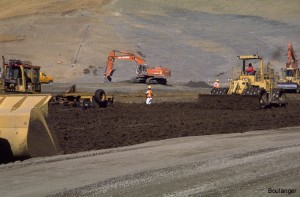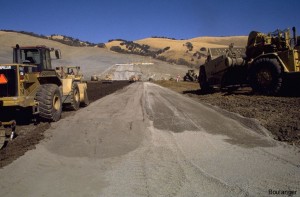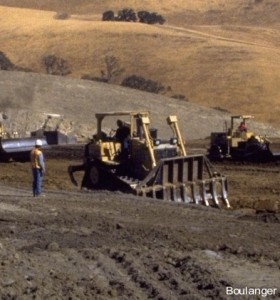These photos are from Los Vaqueros dam, California, during construction in 1998. This large earthwork project involved numerous pieces of equipment and required a high degree of engineering quality control.
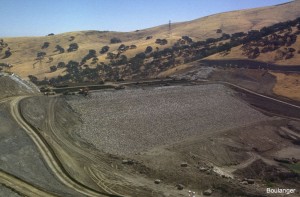
View of the embankment from the upstream side, with almost 2/3 of the embankment completed. Notice the haul roads on the left abutment.
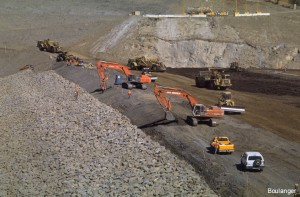
Backhoes carefully place large rocks (rip-rap) on the upstream face. The rocks are carefully packed together to protect the dam face from erosion.
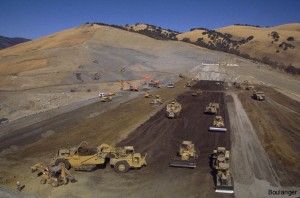
The different colored soils correspond to the upstream shell (left side), core (darkest), filter, and drain zone (lightest), and downstream shell.
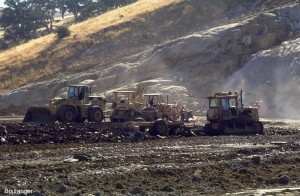
A closer view of the disk that breaks the imported soil down into smaller clods for effective moisture conditioning and compaction.

